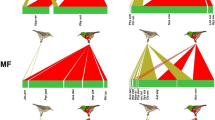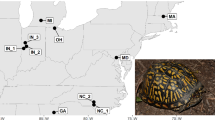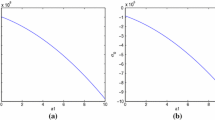Abstract
Sexual selection that results in the evolution of exaggerated secondary sexual characters has been hypothesized to impose production and maintenance costs of such traits on their bearers. Costs arising from sexual selection could increase the intensity of predator-mediated natural selection, leading to the prediction that species with exaggerated secondary sexual characters should be particularly susceptible to predation. We tested this prediction in a comparative analysis based on 31,745 prey individuals belonging to 66 species of birds collected from a total of 937 breeding events by 33 to 66 different pairs of European sparrowhawks Accipiter nisus annually during a period of 21 years. To assess vulnerability of different species we estimated a prey vulnerability index based on the difference in the logarithmically transformed absolute abundance of prey minus the logarithmically transformed expected abundance as determined by population density of breeding birds. The prey vulnerability index was predicted by sexual dichromatism, accounting for 23% of the variance in risk of predation among species, even when considering similarity in phenotype among species due to common descent (in the latter case explaining 12% of the variance). This finding suggests that sexual selection is an important evolutionary force-affecting predator–prey interactions.

Similar content being viewed by others
References
Allen JA (1988) Frequency-dependent selection by predators. Phil Trans R Soc Lond B 319:485–503
Amundsen T (2000) Why are female birds ornamented? Trends Ecol Evol 15:149–155
Andersson M (1994) Sexual selection. Princeton Univ Press, Princeton, NJ
Badyaev AV (1997) Altitudinal variation in sexual dimorphism: a new pattern and alternative hypotheses. Behav Ecol 8:675–690
Baker RR, Bibby CJ (1987) Merlin Falco columbarius predation and theories of the evolution of bird coloration. Ibis 129:259–263
Baker RR, Parker GA (1979) The evolution of bird coloration. Phil Trans R Soc Lond B 287:63–130
Barker FK, Barrowclough GF, Groth JG (2001) A phylogenetic hypothesis for passerine birds: Taxonomic and biogeographic implications of an analysis of nuclear DNA sequence data. Proc R Soc Lond B 269:295–308
Barker FK, Cibois A, Schikler P, Feinstein J, Cracraft J (2004) Phylogeny and diversification of the largest avian radiation. Proc Natl Acad Sci USA 101:11040–11045
Blondel J, Catzeflis F, Perret P (1996) Molecular phylogeny and thehistorical biogeography of the warblers of the genus Sylvia (Aves). J Evol Biol 9:871–891
Burnham KP, Anderson DR (1998) Model selection and inference. Springer, Berlin Heidelberg New York
Cibois A, Pasquet E (1999) Molecular analysis of the phylogeny of 11 genera of the Corvidae. Ibis 141:297–306
Cott HB (1947) The edibility of birds: Illustrated by five years’ experiments and observations (1941–1946) on the food preferences of the hornet, cat and man; and considered with special reference to the theories of adaptive coloration. Proc Zool Soc Lond 116:371–524
Crawley MJ (1992) Natural enemies: The population biology of predators, parasites and diseases. Blackwell, Oxford
Darwin C (1871) The descent of man and selection in relation to sex. Murray, London
Dunning Jr JB (1993) CRC handbook of avian body masses. CRC, Boca Raton
Eaton MD (2005) Human vision fails to distinguish widespread sexual dichromatism among sexually “monochromatic” birds. Proc Natl Acad Sci USA 102:10942–10946
Endler JA (1986) Natural selection in the wild. Princeton Univ Press, Princeton, NJ
Endler JA (1991) Interactions between predators and prey. In: JR Krebs, NB Davies (eds) Behavioural ecology. Blackwell, Oxford, pp 169–196
Felsenstein J (1985) Phylogenies and the comparative method. Am Nat 125:1–15
Garland Jr T, Harvey PH, Ives AR (1992) Procedures for the analysis of comparative data using phylogenetically independent contrasts. Syst Biol 41:18–32
Götmark F (1992) Anti-predator effects of conspicuous plumage in a male birds. Anim Behav 44:51–55
Götmark F (1993) Conspicuous coloration in male birds: favoured by predation in some species, disfavoured in others. Proc R Soc Lond B 253:143–146
Götmark F, Post P (1996) Prey selection by sparrowhawks, Accipiter nisus: relative predation risk for breeding passerine birds in relation to their size, ecology and behaviour. Phil Trans R Soc Lond 351:1559–1577
Green R (1979) Sampling design and statistical methods for environmental biologists. Wiley, New York
Grell MB (1998) Fuglenes Danmark. Gad, Copenhagen
Holling CS (1965) The functional response of predators to prey density and its role in mimicry and population regulation. Mem Entomol Soc Can 45:1–60
Huhta E, Rytkönen S, Solonen T (2003) Plumage brightness of prey increases predation risk: an among-species comparison. Ecology 84:1793–1799
JMP (2000) JMP. SAS Institute Inc., Cary
Jones KE, Purvis A (1997) An optimum body size for mammals? Comparative evidence from bats. Funct Ecol 11:751–756
Møller AP, Birkhead TR (1994) The evolution of plumage brightness in birds is related to extra-pair paternity. Evolution 48:1089–1100
Møller AP, Nielsen JT (1997) Differential predation cost of a secondary sexual character: Sparrowhawk predation on barn swallows. Anim Behav 54:1545–1551
Møller AP, Merino S, Brown CR, Robertson RJ (2001) Immune defense and host sociality: A comparative study of swallows and martins. Am Nat 158:136–145
Møller AP, Marzal, A, Navarro C, de Lope F (2004) Predation risk, host immune response and parasitism. Behav Ecol 15:629–635
Mullarney T, Svensson L, Zetterström D, Grant PJ (2000) The complete guide to the birds of Europe. Harper Collins, London
Newton I (1986) The sparrowhawk. Poyser, Berkhamstead
Newton I, Marquiss M (1982) Food, predation and breeding season in sparrowhawks (Accipiter nisus). J Zool 197:221–240
Nielsen JT (2004) A population study of sparrowhawks Accipiter nisus in Vendsyssel, Denmark, 1977–1997. Dan Ornithol Foren Tidsskr 98:147–162 (Danish, with English summary)
Nielsen JT (2004) Prey selection of sparrowhawks in Vendsyssel, Denmark. Dan Ornithol Foren Tidsskr 98:164–173 (Danish, with English summary)
Opdam P (1978) Feeding ecology of a sparrowhawk population (Accipiter nisus). Ardea 66:137–155
Petrie M (1992) Peacocks with low mating success are more likely to suffer predation. Anim Behav 44:585–586
Purvis A, Rambaut A (1995) Comparative analysis by independent contrasts (CAIC). Comput Appl Biosci 11:247–251
Read AF (1987) Comparative evidence supports the Hamilton and Zuk hypothesis on parasites and sexual selection. Nature 328:68–70
Rytkönen S, Kuokkanen P, Hukkanen M, Huhtala K (1998) Prey selection by sparrowhawks Accipiter nisus and characteristics of vulnerable prey. Ornis Fenn 75:77–87
Selås V (1993) Selection of avian prey by breeding sparrowhawks Accipiter nisus in southern Norway: the importance of size and foraging behaviour of prey. Ornis Fenn 70:144–154
Sheldon FH, Slikas B, Kinnarney M, Gill FB, Zhao E, Silverin B (1992) DNA–DNA hybridization evidence of phylogenetic relationships among major lineages of Parus. Auk 109:173–185
Sibley CG, Ahlquist JE (1990) Phylogeny and classification of birds, a study in molecular evolution. Yale Univ Press, New Haven and London
Sibley CG, Monroe Jr BL (1990) Distribution and taxonomy of birds of the World. Yale Univ Press, New Haven and London
Slagsvold T, Dale S, Kruszewics A (1995) Predation favours cryptic coloration in breeding male pied flycatchers, Ficedula hypoleuca. Anim Behav 50:1109–1121
Slikas B, Sheldon FH, Gill FB (1996) Phylogeny of titmice (Paridae): I. Estimate of relationships among subgenera based on DNA–DNA hybridization. J Avian Biol 27:70–82
Sokal RR, Rohlf FJ (1995) Biometry. 3rd edn. Freeman, New York
Svensson L (1984) Identification guide to European passerines. L. Svensson, Stockholm
van Beusekom CF (1972) Ecological isolation with respect to food between sparrowhawk and goshawk. Ardea 60:72 — 96
Vermeij GJ (1987) Evolution and escalation: An ecological history of life. Princeton Univ Press, Princeton
Viitala J, Korpimäki E, Palokangas P, Koivula M (1995) Attraction of kestrels to vole scent marks visible in ultraviolet-light. Nature 373:425–427
Acknowledgements
We would like to thank all landowners who provided access to their properties. H. Grunnet and J. K. Jensen helped collect some of the material. S. Rytkönen kindly provided constructive criticism.
Author information
Authors and Affiliations
Corresponding author
Additional information
Communicated by P. Bednekoff
Electronic supplementary materials
Rights and permissions
About this article
Cite this article
Møller, A.P., Nielsen, J.T. Prey vulnerability in relation to sexual coloration of prey. Behav Ecol Sociobiol 60, 227–233 (2006). https://doi.org/10.1007/s00265-006-0160-x
Received:
Revised:
Accepted:
Published:
Issue Date:
DOI: https://doi.org/10.1007/s00265-006-0160-x




